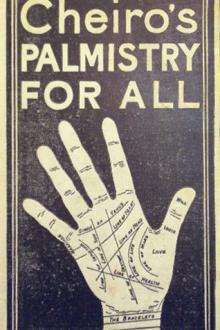The Diary - Samuel Pepys (red white and royal blue hardcover txt) 📗

- Author: Samuel Pepys
Book online «The Diary - Samuel Pepys (red white and royal blue hardcover txt) 📗». Author Samuel Pepys
See September 9th, 1665. ↩
“A sort of jacket called justacorps came into fashion in Paris about 1650. M. Quicherat informs us that a pretty Parisienne, the wife of a maître de comptes named Belot, was the first who appeared in it. In a ballad called ‘The New-made Gentlewoman,’ written in the reign of Charles II, occurs the line, ‘My justico and black patches I wear.’ Mr. Fairholt suggested that justico may be a corruption of juste au corps.”
—Planché’s Cyclopædia of Costume, vol. i, p. 318↩
Experiments and Considerations Touching Colours was published by the Hon. Robert Boyle in 1664 (London). ↩
Jonas Shish, master builder at Deptford dockyard. See note 1752. ↩
Captain John Cox, master attendant at Deptford. ↩
Among the State Papers is an “Account by Captain J. Perriman of work doing on and the movements of 13 ships named, lying in the Thames,” dated April, 1667 (Calendar, 1667, p. 66). ↩
At the passage of the Dardanelles, in 1807, a stone shot, fired by the Turks from the Castle of Sestos, entered the Lion, of sixty-four guns, and killed and wounded a great many men. It weighed 770 pounds. —B. ↩
See April 10th, 1667. ↩
James Stuart, second son of the Duke of York, born July 12th, 1663; created Duke of Cambridge, August 23rd, 1664; died June 20th, 1667. ↩
Lady Mary Boyle, fourth daughter of Richard, first Earl of Burlington, married to Viscount Hinchingbroke, 1668. ↩
Lawrence Hyde, afterwards Earl of Rochester, married Lady Henrietta Boyle, fifth daughter of the Earl of Burlington, 1665. ↩
Probably John Madden, surveyor of the woods on this side Trent (see Calendar of State Papers, 1667, p. 83). ↩
On the 1st of May milkmaids used to borrow silver cups, tankards, etc., to hang them round their milkpails, with the addition of flowers and ribbons, which they carried upon their heads, accompanied by a bagpipe or fiddle, and went from door to door, dancing before the houses of their customers, in order to obtain a small gratuity from each of them.
“In London thirty years ago,
When pretty milkmaids went about,
It was a goodly sight to see
Their Maiday pageant all drawn out.
⋮
“Such scenes and sounds once blest my eyes
And charm’d my ears; but all have vanish’d,
On Maiday now no garlands go,
For milkmaids and their dance are banish’d.”
Maiday customs have nearly died out, but the editor saw a jack-in-the-green with men dressed as milkmaids dancing round it on May 1st of the present year (1895) in one of the streets near Primrose Hill. There has been a great revival of Maiday decoration on carthorses within the last few years. ↩
The old house in Drury Lane where Nell Gwyn is believed to have lived was pulled down in 1891. It was situated on the west side of the lane, nearly opposite Wych Street. There is a view of it in Peter Cunningham’s Story of Nell Gwyn. ↩
William Garway, M.P. for Chichester (see note 2994). Timothy Littleton, or Lyttelton, Serjeant-at-Law, M.P. for Ludlow. ↩
John Egerton, second Earl of Bridgewater, Lord-Lieutenant of the counties of Bucks and Hertford, and High Steward of the University of Oxford. Died October 26th, 1686. ↩
The Earl of Southampton died May 16th, 1667. ↩
The second title of Shirley’s play of The Changes (see note 1425). ↩
Probably Craven. —B. ↩
In reference to this passage, Mr. R. Jacomb Hood wrote to Notes and Queries (4th series, vol. xii, p. 471), as follows: “I have an old silver tankard, which has been in my family for several generations, and which, from the inscription upon it, seems to have been given by the king to Sir Edmund Berry Godfrey, who was murdered in 1678. The inscriptions show, not only that a tankard was given in 1665 for services during the Plague, but that the recipient was further knighted by the king in September, 1666, for his efforts to preserve order in the Great Fire. The tankard is quite plain, weighs 38 oz., and holds about two quarts.” Mr. Hood adds, however, that “the hall mark appears from the trade register to belong to the years 1675–76, i.e., at least eight years later than the notice by Pepys.” ↩
Margaret Lowther, afterwards the wife of Captain Sir John Holmes. —B. ↩
Pepys’s conjecture proved right. The house was not sold till Sir R. Brookes’s death, when his heirs alienated it to Sir Josiah Child. Sir R. Child rebuilt it in 1715, and the Earl of Mornington took it down in 1823. ↩
John Troughtback (or Troutbeck) served as a surgeon in Lambert’s army, but joined Monk in Scotland in 1659. He was appointed chief-surgeon to the king in 1660, was also surgeon to the Duke of Albemarle’s troop of His Majesty’s Life Guard, and was granted in 1667 a pension of £200 a year for his services. He married in





Comments (0)